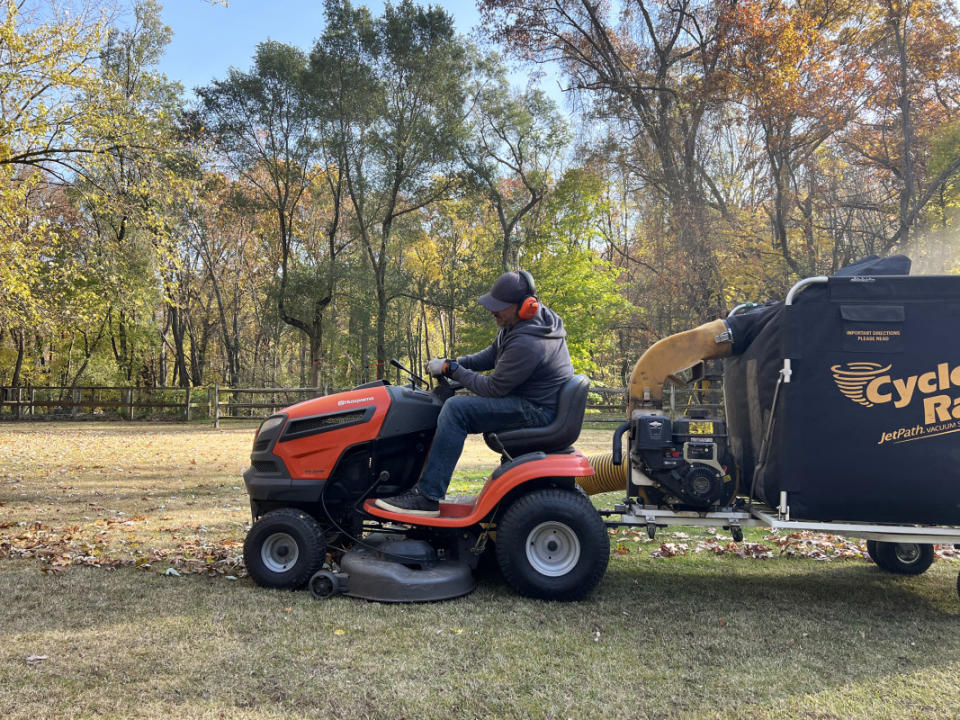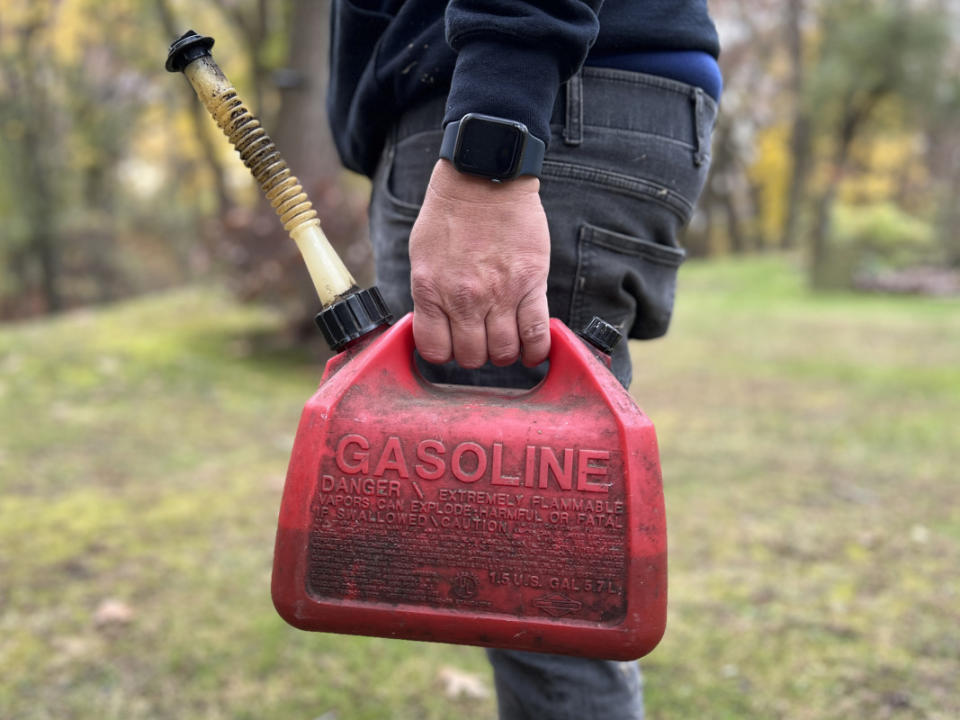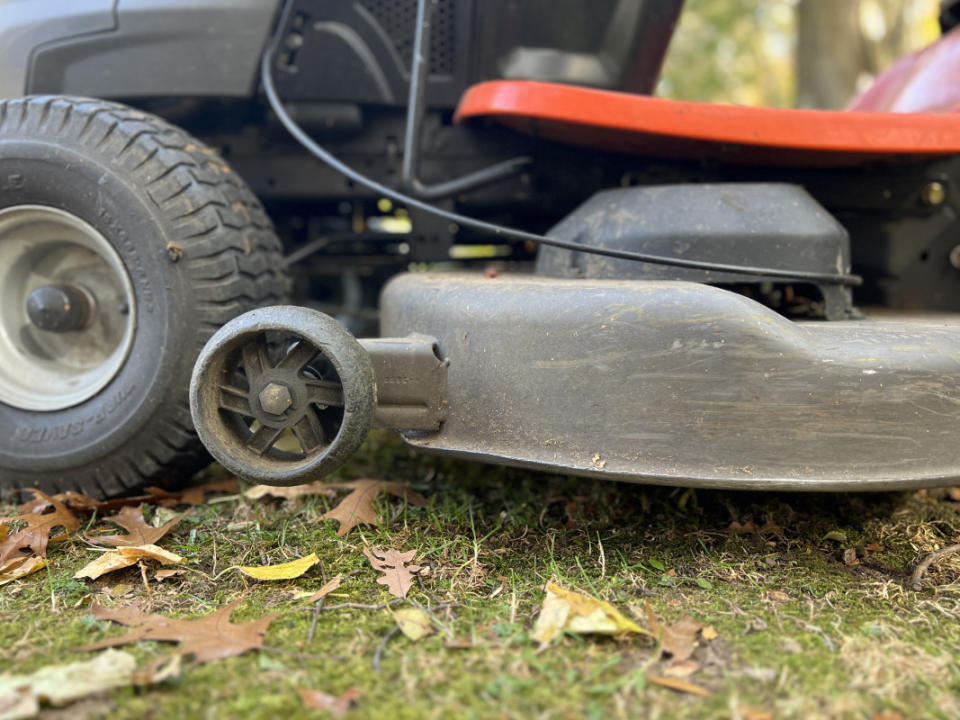Learn How to Winterize Your Lawn Mower
Men’s Journal aims to feature only the best products and services. If you buy something via one of our links, we may earn a commission.
Proper winterization and storage are important for all small engine machines, but especially your lawn mower. These tips apply both to push mowers and riding lawn mowers and are intended to help preserve your lawn mower's performance. Follow this comprehensive checklist and enjoy a seamless transition from winter into the start of spring.
Before you get started, consult your owner’s manual for specific instructions based on your make and model.
Things You’ll Need
Putty knife or scraper
Stiff brush
Spray bottle with water
Old towel
Air filter
Grease gun
Oil
Blocks (if stored outdoors)
Finish Your Fall Lawn Care
Before storing your mower, give your lawn a final trim. Not only does it help aesthetically to give your grass one final haircut, but leaving your grass about two inches long (a little longer than you’d have it at peak summer) will promote winter resilience, spring regrowth, and prevent snow mold and other winter lawn issues.
Related: End-of-Season Tips to Get Your Lawn Ready for Winter
Clean the Deck and Undercarriage
Use a scraper and a stiff brush to remove grass clippings, debris, and mud from the mower's undercarriage and deck. It doesn’t need to be perfectly clean, but you can also clean it up by wiping it down with a spray bottle of water and a towel.
Sharpen the Blades
Springtime you will be so happy, I promise. Removing the mower blades and sharpening or replacing them is probably not a chore on your list, but it’s so nice to start the next year off with fresh blades. While you’re under the deck and cleaning up everything else, you may as well get at it.

Emily Fazio
Empty the Fuel Tank
Letting your fuel tank sit full is a bad idea. Stale fuel can cause starting issues in the spring.
You have two options:
Run the mower until the fuel tank is nearly empty.
Use a fuel stabilizer to prevent gas breakdown while the mower isn’t in use.

Emily Fazio
Change the Oil
Changing the oil before storage helps remove any contaminants and ensures a smoother start in the spring. Fresh oil contains rust inhibitors and will help your mower tolerate the extended period of non-use. Consult your mower's manual for oil change instructions.
Replace the Air Filter
A clean air filter is essential for efficient engine performance and is very easy to replace. Many manufacturers recommend doing this once a season, so check it off your list now.
Remove the Spark Plug
Lubricate the spark plug by pouring a tablespoon of oil into the spark plug hole to help lubricate the walls of the cylinders.
Pull the starter cord slowly a few times to turn the engine, but avoid starting it. This helps to distribute the oil.
Remember: On a riding lawn mower, you might have two spark plugs!

Emily Fazio
Inspect Belts and Cables
Check for any worn or damaged belts and cables. Replace them if necessary to ensure proper functioning next season.
Grease Moving Parts
Hitting all the important parts of your mower with a bit of grease helps parts resist abrasion and corrosion, and promotes weatherproofing. Use a grease gun to lubricate the mower's moving parts, including:
Wheels
Axles
The mower's height adjustment mechanism
Cutting spindles
Consult your owner’s manual to confirm what type of grease is best for your lawn mower.

Emily Fazio
Remove or Maintain the Battery
If your mower has a battery, remove it for the winter and store it in a cool, dry place.
If you need to keep it in the mower, add a trickle battery charger that will help prevent a complete discharge.
Related: How to Winterize Your Home Irrigation System
Elevate the Mower
Storing your lawn mower indoors is ideal, but if you can’t, elevate the mower using a platform or wood blocks. Raising the lawn mower off the ground promotes good air circulation around the deck while not in use.
